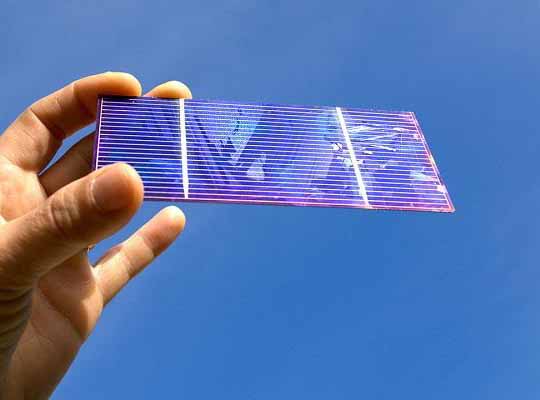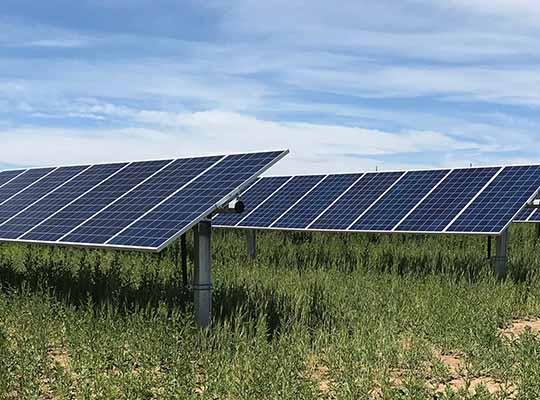The global perovskite solar cells market is expected to reach USD 3,926.0 Million by 2028, according to a new report by Reports and Data. These products comprise a perovskite-organized compound as an active light-absorbing layer and are deployed in a variety of end-user applications.
Higher efficiency delivered by perovskite solar cells than conventional ones is one of the major factors influencing market growth. It is an evolving thin-film class photovoltaics also popular as 3rd generation photovoltaics having the potential to deliver improved current efficiency and performance limits. The product intends to enhance the efficiency of the cells and reduce the cost of solar energy. These types of solar cells can reach a wide spectrum of light and hence can convert more solar power into electricity. As per the U.S. Department of Energy, Perovskite solar cells have displayed notable advancement in recent years with swift improvement in conversion efficiency, from around 3% in 2006 to more than 24% in 2019.
Growing environmental concerns about reduction of carbon emission may drive the market in the upcoming years. The product provides clean energy by tapping solar energy, and thereby benefitting the environment. It acts as an alternative source of energy to fossil fuels, thus reducing carbon footprint, as well as reducing greenhouse gas across the globe. In the past years, the product has outperformed all other third-generation photovoltaic technologies in terms of conversion efficiency.
Additionally, advancements in technology for producing perovskite solar cells are likely to fuel the growth of the market in the forecast period. In December 2018, Oxford PV announced that it had attained a 28% conversion efficiency for its tandem perovskite-based solar cell. This compares to 22% at present for a typical silicon cell.
Further key findings from the report suggest
- By structure, mesoporous perovskite held a major market share in 2018. At present, the mesoporous structure is one of the most popular structures in the fabrication of the product, with a power conversion efficiency of over 20%.
- By product type, flexible perovskite solar cells are expected to grow at a faster rate of 32.8% in the forecast period. These are a potential photovoltaic technology attributed to their intrinsic advantages such as lightweight and bendability, making them very convenient for transportation, installation, and integration with wearable electricity generating devices and architectures.
- The vapor-assisted solution method is forecasted to witness the highest growth rate of 33.3% in the forecast period. This method is a relatively economical synthesis method of high-quality light-absorbing perovskite layers and was developed to avoid the disadvantages of the solution method and the vapor deposition method.
- The Asia Pacific region dominated the market in 2018 and is expected to grow at a rate of 32.7% in the period 2019-2026. Rapid urbanization and increasing demand in the region for sustainable energy is likely to drive the market growth in the upcoming years. Also, rapid advancement and adoption of the technology in the countries of this region are adding to the growth of the market.
- Key participants include Oxford Photovoltaics, FrontMaterials Co. Ltd., Solaronix SA, Xiamen Weihua Solar Co. Ltd., Fraunhofer ISE, Dyesol, Saule Technologies, FlexLink Systems Inc., Polyera Corporation, and New Energy Technologies Inc., among others.
For the purpose of this report, Reports and Data have segmented the global perovskite market on the basis of structure, product type, method, industry verticals, and region:
Structure Outlook (Revenue, USD Million; 2018-2028)
- Planar Perovskite Solar Cells
- Mesoporous Perovskite Solar Cells
Product Type Outlook (Revenue, USD Million; 2018-2028)
- Rigid Perovskite Solar Cells
- Flexible Perovskite Solar Cells
Method Outlook (Revenue, USD Million; 2018-2028)
- Solution Method
- Vapor-Deposition Method
- Vapor-Assisted Solution Method
Industry Verticals Outlook (Revenue, USD Million; 2018-2028)
- Aerospace
- Industrial Automation
- Consumer Electronics
- Energy
- Others
Regional Outlook (Revenue, USD Million; 2018-2028)
- North America
- U.S.
- Europe
- UK
- France
- Asia Pacific
- China
- India
- Japan
- Latin America
- Brazil
- MEA













